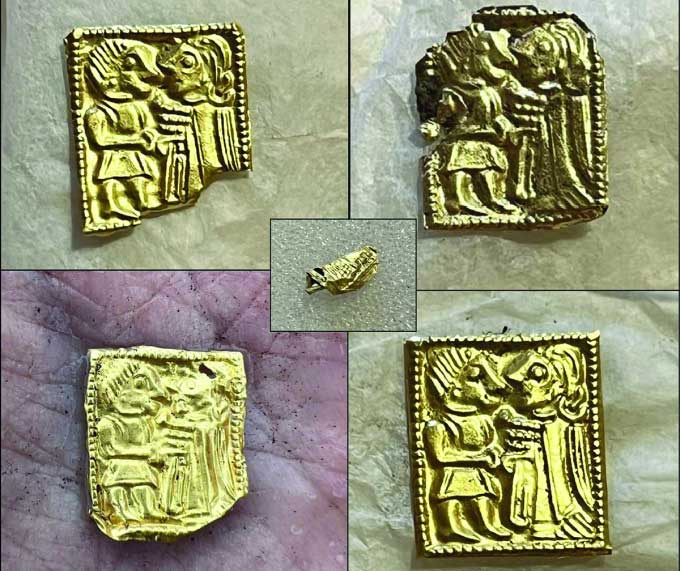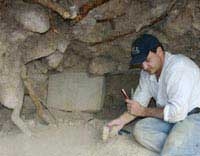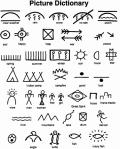Archaeologists Discover 35 Small Gold Pieces Dating from the 5th to 8th Century Beneath an Ancient Temple in Vingrom Village, Suburbs of Lillehammer.

Intricate small gold pieces discovered in Norway. (Photo: Nicolai Eckhoff).
The gold pieces, square-shaped and comparable in size to fingernails, are extremely thin and feature carvings of men and women dressed in splendid attire, as reported by Newsweek on September 18. Some pieces depict couples facing each other, with the man on the left and the woman on the right, according to archaeologist Nicolai Eckhoff from the University of Oslo, a member of the excavation team at Vingrom village. These gold artifacts date back to the Merovingian dynasty, the ruling family of the Frankish kingdom from the 5th century until around 751.
“These gold pieces are very small, but the details are extremely intricate. Typically, women are depicted wearing dresses, sometimes with belts and cloaks, while men wear shorter skirts that reveal their feet and may also wear cloaks. Both genders can wear jewelry, have different hairstyles, and hold various items such as drinking cups, wands, rings, or use their hands to express different gestures. The detail and variety of these gold pieces make them a valuable resource for studying the clothing and symbolism of that era,” Eckhoff stated.
The discovery of such gold pieces in Norway is exceptionally rare. Only 10 sites have previously uncovered them, often related to ancient worship places.
“Most interpretations suggest that these gold pieces hold mythological or ritual significance. Some believe that the pieces featuring couples depict a sacred marriage between the god Freyr and Gerd or were used as offerings during wedding ceremonies or fertility rites,” Eckhoff explained.
However, there is also an alternative hypothesis that they served as a form of temple currency. “The gold pieces found during this year’s excavation are associated with drill holes and corridors. Their presence within the building and in the holes of load-bearing columns suggests they may have been offerings, markers for seating, or places for worship,” Eckhoff added.





















































